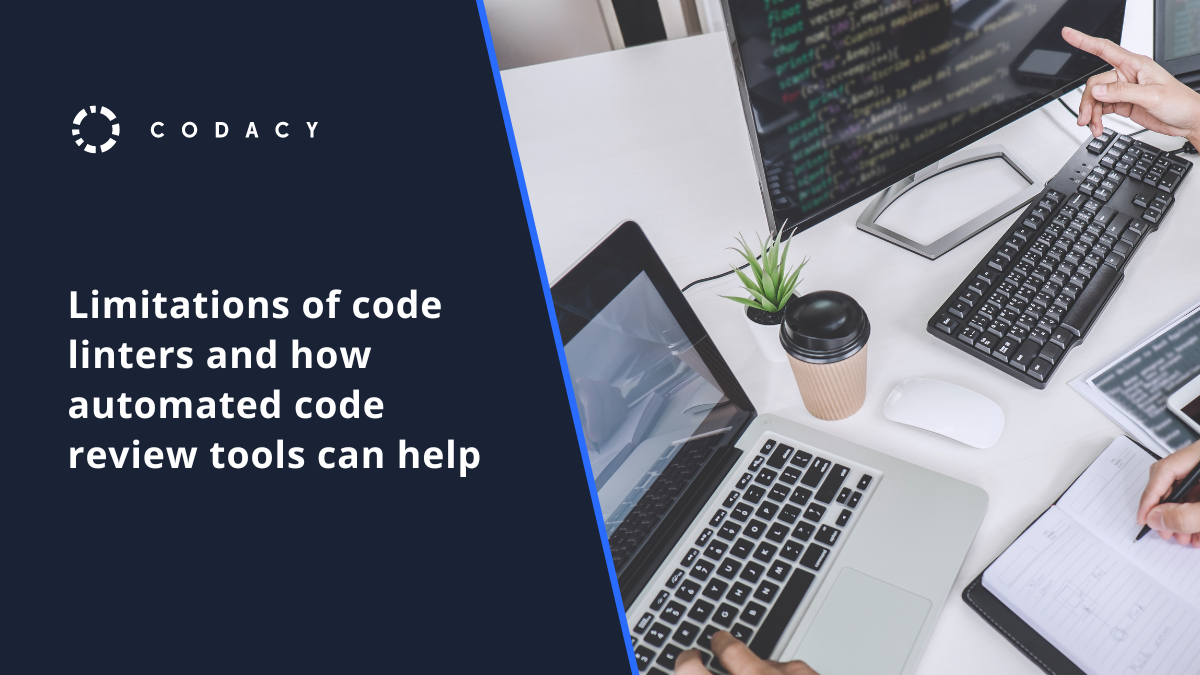Limitations of code linters and how automated code review tools can help

Code linters have become an increasingly popular tool for improving code quality by examining source code and detecting bugs and errors.
However, while code linters can be extremely useful, they can also introduce several pain points for developers and might not offer comprehensive insights into the codebase.
Let’s see some of the most common drawbacks when using code linters and how code review tools can give you more in-depth insights to improve your code quality.
5 limitations of code linters
Support for only one programming language
Although some code linters, like PMD, can be used for multiple programming languages, most code linters only support a single language.
Technology stacks with several languages, frameworks, or libraries may need various linting tools integrated into the development workflow. This is not practical and might even hinder performance.
False positives
False positives occur when a code linter flags an issue in the code when, in fact, everything is correct. This can frustrate developers, as they spend time and effort investigating non-issues.
It’s possible to better control false positives by fine-tuning the linter configurations for particular files. However, this raises another issue we’ll cover next: configuration complexity and customization limitations.
Configuration complexity and customization limitations
Setting up a code linter can be challenging, especially for large projects with multiple contributors and a complex codebase. Plus, adjusting the rules can become complicated when configuring multiple linters since each linter might have a different configuration file with different syntaxes and semantics.
While some linters are highly configurable, others may have limited customization options. This can be a significant pain point for developers needing more flexibility in configuring the tool to meet their specific needs, particularly when reducing false positives.
Limited scope, with reporting on basic metrics only
Some code linters focus on just one aspect of code quality, like security, syntax, code coverage, or code style. We need to use more than one linter to combine these different aspects.
Plus, code linters are typically unable to detect more complex issues, such as performance bottlenecks or cyclomatic complexity. As such, obtaining an integrated, holistic view of code quality becomes more difficult.
Steep learning curve and inconsistent enforcement
Using a code linter can require a learning curve for developers, as they need to understand how to use and configure the linting tools effectively. This can be particularly challenging for developers who are new to the linter or the programming language, making it a barrier to linter adoption.
If your team doesn’t use linters consistently, it can lead to varying code quality and undermine the value of using a code linter in the first place.
How automated code review tools can help
Automated code review tools like Codacy Quality use static code analysis to check your code quality and keep track of your technical debt. These tools make early development faster and more efficient since you can catch errors before they end up causing significant damage, and they offer a broader scope than code linters alone.
Advanced code review tools encompass an easy-to-use UI, a wide range of capabilities and metrics, and the ability to analyze your code in a variety of programming languages at the same time – all in one tool.
At Codacy, we continuously integrate several linting tools, guaranteeing the linters are always up to date. We also constantly introduce new and relevant tools, so you don’t need to worry about a thing. In addition, we support 40+ programming languages and 20 000+ rules and allow you to disable any rule you consider a false positive with a click of a button.
🎥 [Webinar] Linter configuration and best practices to improve code quality
Join our guest speaker Jeroen Engels, author of elm-review, and Lorenzo Gabriele, Software Engineer at Codacy, in discussing how to configure your code linters better.
.svg)


